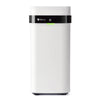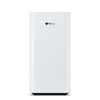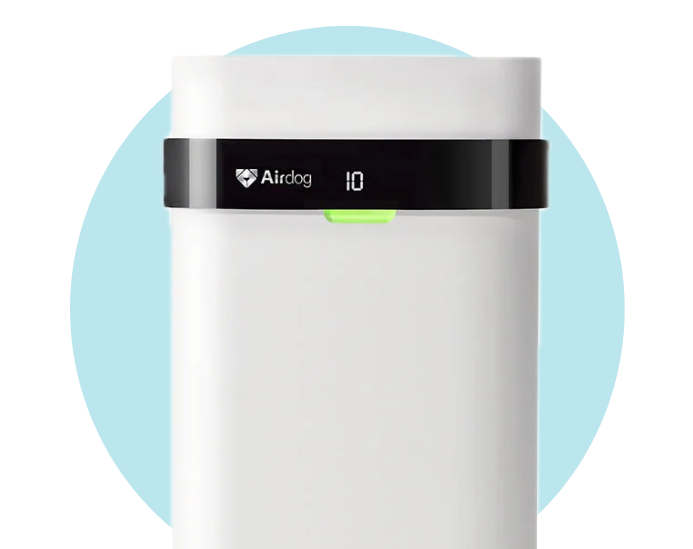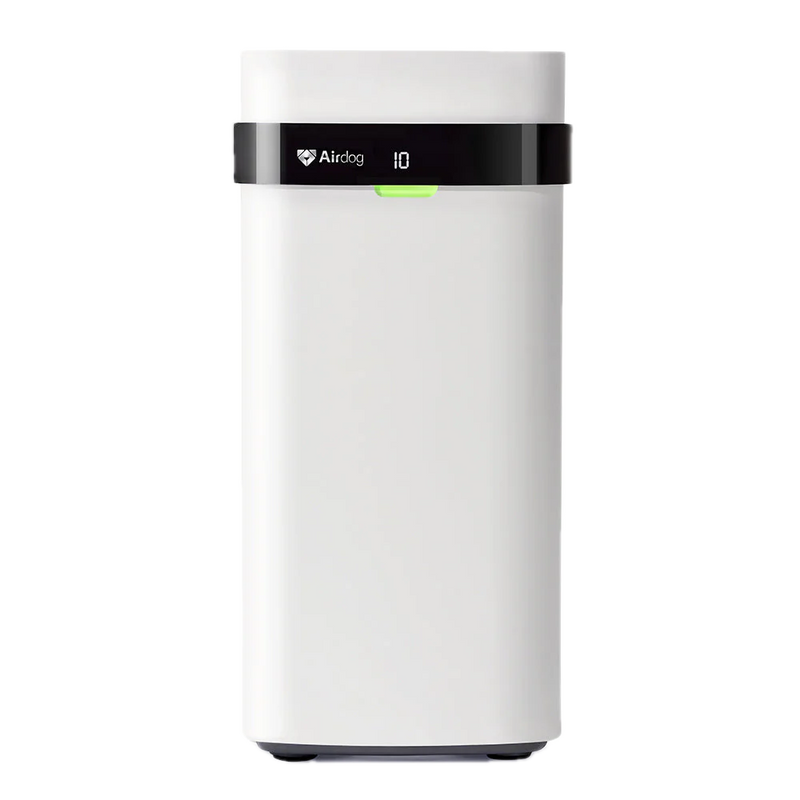Have you ever noticed the fine layer of dust that quietly accumulates on surfaces? We're talking about house dust and surprisingly, the average household wrestles with about 40 pounds of dust annually!
This article explores the makeup and sources of house dust, revealing it as more than just a nuisance. From clothing fibers to microscopic organisms, dust is a complex mix of indoor and outdoor particles that impact both cleanliness and health.
The Microscopic World of House Dust
Defined by the National Center for Biotechnology Information (NCBI) as a heterogeneous mixture, house dust comprises various substances from numerous sources, both internal and external to our homes. This mixture includes, but is not limited to:
Tracked-in and Resuspended Soil Particles
-
Outdoor to Indoor Transfer: Every time we enter our homes, soil and particulate matter hitch a ride on our shoes, pets, and clothing, making their way indoors.
-
Activities and Wind: Outdoor activities and natural phenomena like wind contribute to the resuspension of soil particles, which then enter our living spaces through open windows and doors.
Atmospheric Deposition
-
Particulates from the Air: Pollen, pollutants, and industrial byproducts from the atmosphere deposit on surfaces in our homes, adding to the dust composition.
-
Vehicle Emissions and Pollen: Particles from vehicle emissions and pollen are significant contributors, especially in urban and suburban areas.
Human and Animal Activities
-
Skin Flakes and Hair: Humans and pets shed skin flakes and hair, which contribute significantly to house dust.
-
Movement and Activities: Daily activities such as walking, playing, or simply sitting on furniture can resuspend dust particles into the air.
Textiles and Upholstered Furniture
-
Fiber Shedding: Clothing, curtains, carpets, and upholstered furniture shed fibers that contribute to the dust mix.
-
Wear and Tear: Regular use and wear of these textiles result in the accumulation of fibers in the dust.
Biological Components
-
Microorganisms: Bacteria, viruses, and molds find a nurturing environment in the dust, especially in damp areas.
-
Allergens and Mites: Dust mites feed on organic matter in the dust, producing allergens that can affect human health.
Interaction Between Indoor and Outdoor Environments
-
Ventilation Systems: Heating, ventilation, and air conditioning systems can introduce and circulate outdoor particles indoors.
-
Seasonal Variations: Changes in weather and seasons impact the types and amounts of particulates entering our homes, influencing dust composition over time.
Health Implications and Allergens
House dust is more than a nuisance—it contains allergens, bacteria, and other particles that can affect our health. Understanding its impact highlights the importance of managing dust in our homes.
Allergens and Respiratory Conditions
House dust acts as a carrier for various allergens that can trigger allergic reactions and exacerbate existing respiratory conditions:
-
Dust Mites: These tiny creatures thrive in the warm, humid environments of household dust, feeding on dead skin cells and other organic matter. Their feces and body fragments can provoke allergic reactions and asthma attacks.
-
Pet Dander: Homes with pets may have higher levels of pet dander in their dust, contributing to allergic responses in sensitive individuals.
-
Pollen: Tracked indoors or infiltrating through open windows, pollen adds to the allergen load of house dust, posing problems for those with seasonal allergies.
-
Mold Spores: Moist environments within homes can foster mold growth, with spores becoming part of the dust matrix. These can trigger allergic reactions and respiratory issues in susceptible people.
Bacteria and Microorganisms
Research, including studies cited on PubMed, has shown that house dust can also be a breeding ground for bacteria and other microorganisms, some of which may be harmful:
-
Pathogenic Bacteria: Certain bacteria found in dust can be pathogenic, leading to infections or exacerbating health conditions.
-
Viruses: Viruses, including those causing the common cold or flu, can also adhere to dust particles, potentially increasing the risk of transmission within households.
Toxic Substances in House Dust
A significant concern highlighted in recent studies, including a Yale Study and an article from Environmental Science & Technology, revolves around the accumulation of metals and other toxic substances in household dust:
-
Heavy Metals: Lead, arsenic, and cadmium, found in older paint, electronics, and certain toys, can accumulate in house dust, posing risks of neurological damage and other health issues.
-
Chemical Pollutants: Phthalates, flame retardants, and other endocrine-disrupting chemicals, commonly found in furniture, electronics, and personal care products, can accumulate in dust and may lead to hormonal imbalances and reproductive issues.
Importance of Managing House Dust
Managing the accumulation and composition of house dust is paramount for health reasons:
-
Reducing Exposure: Regular and thorough cleaning can significantly reduce the levels of allergens, bacteria, and toxic substances in house dust, thereby minimizing exposure risks.
-
Preventative Measures: Utilizing air purifiers, maintaining optimal humidity levels to deter dust mite proliferation, and using doormats to limit the tracking in of pollutants can further aid in managing dust levels.
-
Awareness and Action: Being aware of the potential health implications associated with house dust and taking proactive steps to mitigate these risks can lead to healthier indoor environments.
Strategies for Dust Management and Reduction
Keeping a clean and healthy home requires effective dust management. With dust's diverse sources and potential health effects, a comprehensive approach to reducing accumulation and exposure is essential.
Regular Cleaning Practices
The cornerstone of effective dust management lies in regular cleaning practices, employing tools and methods designed to capture the widest range of dust particles.
-
Vacuuming with HEPA Filters: Utilize vacuum cleaners equipped with HEPA filters to effectively trap fine particles, including pollen, pet dander, and dust mites, that conventional filters may recirculate into the air.
-
Dusting with Microfiber Cloths: Opt for microfiber cloths when dusting surfaces. Their electrostatic properties allow them to attract and hold dust particles, preventing them from becoming airborne again.
-
Frequent Washing of Beddings and Upholstered Furniture: Encase mattresses and pillows in dust-mite-proof covers and wash all beddings in hot water weekly to kill dust mites. Similarly, vacuum upholstered furniture regularly to reduce dust and allergen accumulation.
Minimizing Outdoor Dust Influx
To curb the entry of outdoor dust into homes, consider the following measures:
-
Use of Doormats: Place high-quality doormats at all entry points and encourage family members and guests to wipe their feet thoroughly. Consider adopting a no-shoes policy indoors to further prevent tracking in dirt and dust.
-
Maintaining Clean Outdoor Spaces: Regularly sweep patios, decks, and entryways. Keep the yard free of debris and trim vegetation near the house to minimize the amount of pollen and organic matter near windows and doors.
Enhancing Indoor Air Quality
Improving the indoor air quality can significantly contribute to reducing dust accumulation:
-
Air Purifiers: Air purifiers like Airdog’s X series effectively capture dust particles, allergens, and pollutants, ensuring cleaner air in key areas like bedrooms and living spaces.
-
Optimal Humidity Levels: Maintain ideal indoor humidity (30-50%) with a mist-free humidifier like Airdog’s MOI humidifier to prevent dust mites while enhancing comfort.
Conclusion
Adopting a proactive and comprehensive approach to managing and reducing house dust not only contributes to a cleaner home environment but also to the overall well-being of its inhabitants. Through regular cleaning practices, measures to reduce the influx of outdoor dust, and efforts to enhance indoor air quality, individuals can effectively mitigate the presence of dust and its associated health risks. Remember, consistent effort and the right strategies are key to keeping dust at bay and ensuring a healthier living space for you and your family.
For more insights and tips on creating a cleaner, healthier home, stay engaged with our content and join our community of proactive homeowners. Your health, your home, your responsibility





